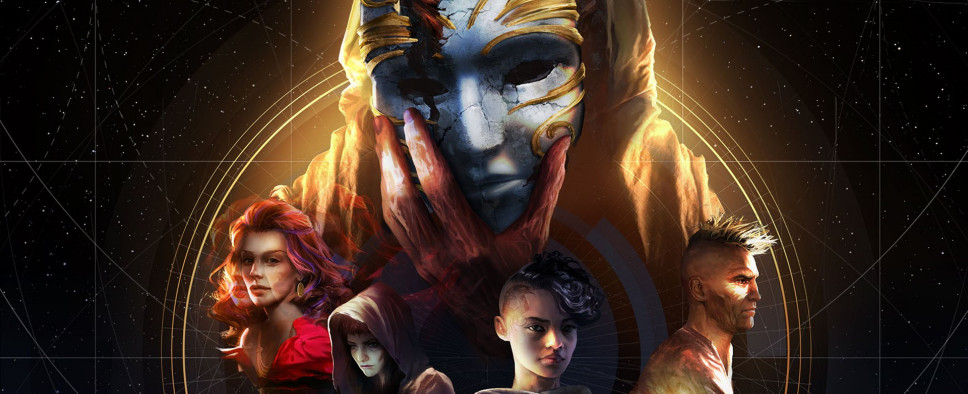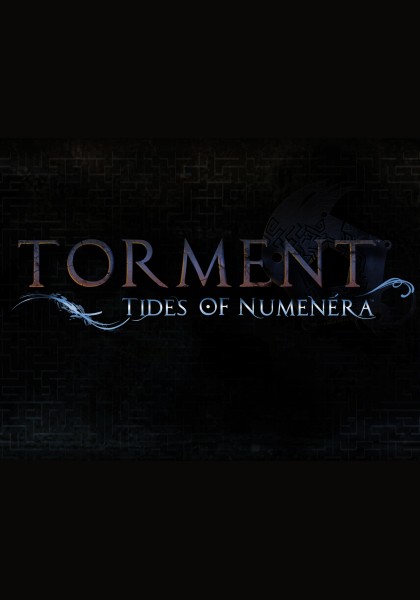Torment: Tides of Numenera Review
-
Category: ReviewsHits: 19126

Article Index
Along with your main character, there are also six possible companions in the game, any three of which you can have in your party at the same time. The companions have different specialties (one uses might weapons, another casts esoteries, a third can heal, and so forth), but unlike most role-playing games, you're not required to fit them into certain roles (like "tank" or "trap-springer"). Any group of four should work just fine, so you can pick the companions you like the best. The companions also advance just like your main character, so you can tune them to fit into your playing style. Unfortunately, the game isn't friendly about swapping companions in and out of your party. Only companions in your party earn experience, so if you have to replace one, you suffer a significant downgrade, especially if it's late in the game.
Overall, I liked the character system. It's different enough to be notable without being so different that it's confusing, and it gives you lots of ways to build characters. I used a "paladin" for my playthrough -- that is, a strong glaive who favors defense, with blue and gold tides -- and everything worked pretty well, even though the campaign isn't really set up for a combat character.
Gameplay Mechanics
Despite featuring 3D characters and environments, Tides of Numenera is played using a fixed isometric view. You can zoom the view in or out, but you're not allowed to rotate or change the pitch of the camera. By default, the camera simply follows your character around, but you can also use the WASD keys to pan the view to other areas. This system makes it easy to explore your surroundings, especially since the tab key highlights interactive objects, but it's sort of awkward in combat. Sometimes you can't move to a location because somebody is in the way (and they block you from clicking on the ground), and sometimes it's difficult to target area-effect abilities because you can't tell who they're going to hit (my character had an ability called Fell Swoop, which hits enemies in an arc, but I so rarely hit multiple enemies with it that I eventually gave up using it).
Controlling your party in Tides is easy. You left-click where you want to move, and you left-click to interact with objects or other people. I don't remember right-clicking doing anything. Your character always leads the party; and your companions simply follow along behind you. There aren't any formations or anything like that. This works fine when you're exploring, but it can be annoying in combat if you're not playing a frontline character, since combat always starts with your character closest to the enemies.
During the exploration part of the game, you talk to people and interact with objects. Both cases are handled through dialogue, where for people it's an actual conversation, and for objects you're given a description of the object plus a list of things you can do with it. Sometimes the dialogues are simple, where you just need to pick a response, but in other cases there are challenges involved, where you have to use a skill and perhaps a stat pool to succeed.
As an example, early in the campaign you come across a strange tree, and you're given the option of breaking off one of its limbs using the Smashing skill. If you're successful, then you gain a club that is probably better than your other melee weapons. But if you fail, then the tree stings you and you gain an extra hit point. That's right, in this case the better reward comes from failing, so the game can be tricky to play.
For most challenges, you can use anyone in your party for them, so as long as you specialize your companions in different ways, it's not too difficult to pass them. But for other challenges, like trying to remember things about the Changing God, you have to complete them by yourself. Luckily, for the latter challenges you're usually allowed to try them again if you fail, just with a penalty of some sort.
For combat, the game switches to turn-based play. During each round of the fight, each character involved gets to take one turn, with the order being determined by the Initiative skill. On each turn, characters can make a move and perform an action -- or just make one really long move. Actions include things like weapon attacks, abilities, and interactions with objects. If enemies get killed, then they're dead, but your companions only get knocked out (and wake back up after the fight is over), and if you die then you wake up in your mind and have to take a portal back to where you were.
Not all fights have to be fights (which is why the game calls them "crisis mode"). For most fights you can do something beforehand to avoid them (like talking your way out of them), and for others you can do things during the fight to avoid combat. For example, in one early quest you have to take over an infected computer system in a building. The infected computer uses drones against you, so you can either fight the drones normally, or you can hack terminals to deactivate the drones. In combat as well as other parts of the game, you're usually given lots of options, which is nice.
After a fight, you typically find piles of loot. The loot might just be money, which is always useful, but it might also include some equipment you can use. Equipment comes in the form of body armor, a cloak, two bonded items, an ornament, a weapon, a shield, and multiple cyphers. There aren't any special equipment classes or set items, and there isn't any crafting. There also aren't any tattoos.
Your companions have fixed armor and cloaks, so you never have to worry about those items for them. Bonded items have positives and negatives attached, but if you learn the Concentration skill, then you can ignore the negatives. Cyphers are powerful, limited-use machines, but if you have too many of them then you start to feel sick, so you either have to use them or sell them. There is also a Cypher skill that allows you to hold more cyphers.
Like in Planescape: Torment before it, Tides of Numenera doesn't put a lot of emphasis on equipment. For most wearable items, there are just enough options in the game to cover your party and give you a slight amount of choice, but nothing more. For example, my character used medium might weapons, and I'm pretty sure I only saw 4-5 during the entire campaign. The exception to this is the cyphers, which are plentiful. Unfortunately, since most cyphers can only be used once, I always saved them for special occasions, and then I ended up never using them.


